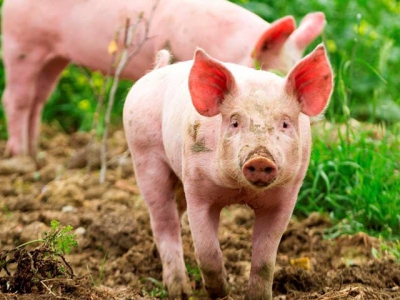The latest in cereal processing for piglets

Cooked cereals in piglet diets are commonplace in many parts of the world, but picking the right one and appropriate thermal processing method remains a challenge.
The quality of piglet feed ingredients is becoming more important due to the reduced use of antibiotics and the trend toward lighter weights at weaning. After weaning, there is a strong risk of reduced feed intake leading to severe gut damage and diarrhea. During this period, dietary starch becomes the most important energy source, even though a piglet's digestive apparatus is still immature and oriented toward milk intake.
What do we know about starch in cereals?
Although starch is the most important energy source in pig feeds, much remains unclear about differences among sources and the effects of different processing technologies of starch on its digestibility. For example, in diet formulation, no distinction is made between slowly digestible starch and readily digestible starch coming from different (processed) cereals. Especially for piglets around weaning, ileal starch digestion is not complete like in older pigs and the magnitude of this effect is not similar for all cereals.
Though cereals do not differ much in their total starch content (70-80 percent), the nature of starch varies, playing a major role in the rate of its digestibility and absorption. For example, the ratio between amylose and amylopectine, the two major starch forms in all cereals, is not standard among all starch sources. Also, the starch granules in which amylose and amylopectine are found, have varying sizes and shapes, as shown in Figure 1 and Figure 2.

Starch granules, in which amylose and amylopectine are found have varying sizes and shapes.
Gelatinization, starch digestibility
Cereal processing can lead to increased starch digestibility by enhancing the readily available starch fraction. Rapidly available starch provides the gut with immediate energy to be used as fuel by intestinal microbes, and of course, by the enteric epithelium. In a recent review, the De Vries et al. (2012), stated that cereal processing not only leads to a higher amount of easily digestible starch, but also to a higher digestibility of non-starch polysaccharides (in pigs this effect ranges from 0 to 19 percent, a reduction in cereal particle size, (which itself causes enhanced starch digestibility), a higher efficiency of added feed enzymes (1.5 - 6x) and improved palatability.
Cereal thermal processing (cooking) is more desirable for the young piglet. However, knowing that important differences exist between different types of starch in cereals is crucial in selecting the appropriate processing conditions, as different processing technologies have varying effects on digestibility, particle size and palatability.
Although cereal cooking leads to starch gelatinization, research has revealed serious differences between processing technologies on the degree of gelatinization and on ileal digestibility of starch and organic matter. For example, micronizing and steam flaking appear to be the least effective processes regarding ileal digestibility and degree of gelatinization, whereas puffing appears to provide a maximum effect, with extrusion being intermediate (as shown in Figure 3 and Figure 4).
A four-year-long study, in cooperation with several laboratories, resulted in more than 100 samples of processed cereals from different commercial suppliers analyzed for starch gelatinization. From the results, it was concluded that much variation exists among available products on the market, depending on the thermal processing method. The degree of gelatinization ranged from 55 percent to 88 percent.



Có thể bạn quan tâm
 Method removes bacteria from boar semen
Method removes bacteria from boar semen Low-density colloid centrifugation shown to reduce bacteria load in collected boar semen without addition of antibiotics.
 Feed mitigant study yields initial results in pigs
Feed mitigant study yields initial results in pigs FFAR-funded study finds five commercially available feed additives may stop spread of swine viruses.
 Strengths and weaknesses of probiotic use in piglet rearing
Strengths and weaknesses of probiotic use in piglet rearing There is a vast amount of research supporting the use of many different probiotic strains at the nursery stage in pig production, but there is still great